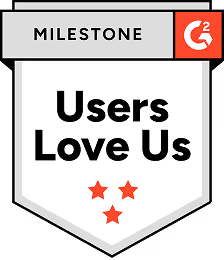Inclusive Gender Practices at Work

Gender inclusivity benefits all genders, as well as businesses that support and strive for inclusivity within their staff and office culture.
When gender-based discrimination is actively thwarted, work productivity increases. Companies with the highest levels of diversity are 15 to 35 percent more likely to see returns greater than the national average for their industry.
Where there is equal opportunity for jobs and promotions for women, poverty rates are reduced and a country’s GDP improves. Closing the wage gap also saves money, as less is needed for the welfare budget.
When it comes to gender inclusion in the workplace, there are a few key practices that can make a big difference. Here are a few ways you can to ensure you’re supporting inclusive gender practices at work.
Avoid gendered language in job titles
It's important to use gender-neutral language when talking about employees or job roles. This means avoiding terms like "manpower" or "waitress" and instead using terms like "staff" or "server." Other examples include using "chair" rather than "chairman," "business associate" rather than "businessman," etc.
Adopt a gender-neutral dress code
Gendered—and sexist—dress codes have typically focused on women, enumerating the width of straps and length of skirts, implicitly blaming women for being sexually distracting. There are several good ways to make dress codes more inclusive:
- Don't have one. It sounds radical, but consider empowering employees to self-select. Many companies have adopted a simple, "dress appropriately" policy
- Focus on gender-neutral body parts and articles of clothing. You might specify that bodies should be covered from shoulder to knee.
- Give examples of non-professional or prohibited attire categories: sportswear, swimwear, flip-flops, clothing with weapons, drugs, alcohol, sexist, racist, or otherwise insensitive designs.
Ensure your physical space is inclusive
Companies should take into consideration the ways that space and design may inhibit gender inclusivity in their office. It may seem surprising, but the layout and associated rules of physical spaces can silently contribute to gendered biases at work. Options to consider include:
- Gender-neutral restrooms and safe nursing stations are available to all staff members. These ensure everyone has a safe and private space for their individual needs. Single stall, gender-neutral bathrooms also benefit older adults and adults with disabilities who need more space to maneuver around.
- In your public-facing restroom spaces, gender-neutral bathrooms will benefit caregivers of adults and children whose genders differ and they’ll have an easier and more comfortable time in a neutral bathroom.
- If you have multi-stall bathrooms, ensure each stall has sanitary product disposals.
- Make sure bathroom signage is clear and does not rely upon a pictogram.
- If your gender-neutral bathroom facilities are located away from the main restrooms, provide signage on gendered bathrooms directing users to that space.
- Install privacy strips or doors that cover the entire border of all restroom stalls.
Offer flexible work arrangements
Companies should offer flexible work arrangements that take into account the needs of employees of different genders. This could mean:
- Offering part-time or flex-time options, as well as working from home options.
- Taking stock of your insurance and benefits to ensure you offer inclusive parental leave and LGBTQ+ healthcare.
Use language that empowers
Language is quite powerful in general, so it’s important that the words you choose promote the culture you envision for your workplace.
- Use pronouns correctly and create expectations for others to do the same by modeling it from your position of power
- If you misgender someone via email, we recommend apologizing privately to the person you have misgendered and asking if they would like you to make a more formal correction.
- If you misgender someone in conversation, apologize and work to make sure it doesn't happen again. Avoid profusely apologizing and calling more attention to the mistake. Further, avoid explaining why you made the mistake, blaming your age or unfamiliarity with pronouns, or telling the person that learning new pronouns is challenging. These can make the mistake about you and place the burden of understanding and providing comfort on your audience.
- Include pronouns in your email signature and model pronouns during introductions.
- By using "partner" instead of girlfriend, boyfriend, significant other, wife or husband in professional settings, we can make more space for LGBTQ+ people. The neutrality inherent in "partner" prevents people from making assumptions about the gender identity and marital status of your relationship. Plus, the notion of partnership reflects a healthy and equal relationship dynamic.
Learn more as a team
Finally, it's important to provide training on inclusive gender practices for all employees. This can help ensure that everyone is aware of the company's commitment to gender inclusion and knows how to support it.
- Have resources and employee resource groups readily available for employees. Employees should not have to navigate complex company bureaucracy to prepare for the adoption of a child or to understand how to file gender confirmation surgery documents with insurance.
- Encourage team members to speak up if they see insensitive and un-inclusive behavior, as well as ensure that they're channels for support or reporting incidents are clearly stated. You should also model this behavior by speaking up in the moment as well.
No workplace is perfect, but Diversity, Equity & Inclusion initiatives can help. For guidance on cultivating an office culture you believe in, get in touch with us here.
FAQs
Read more posts
View all BlogsNeed more help?
If you still have questions, make sure to check out our Help Center: there, you'll find all the tips & advice you'll need to get your team up & running with Regie.ai.









